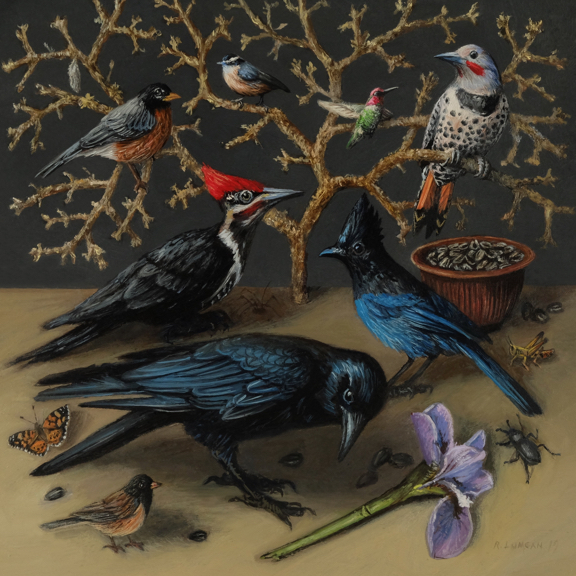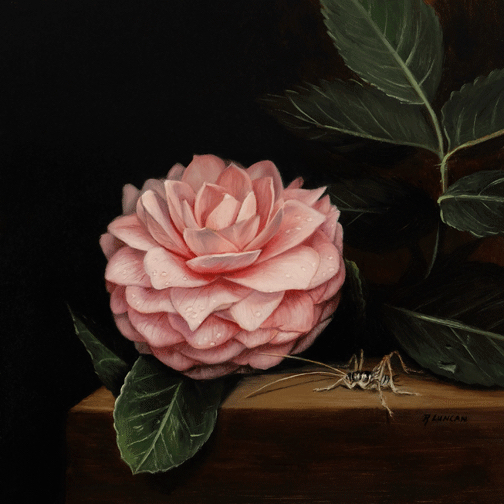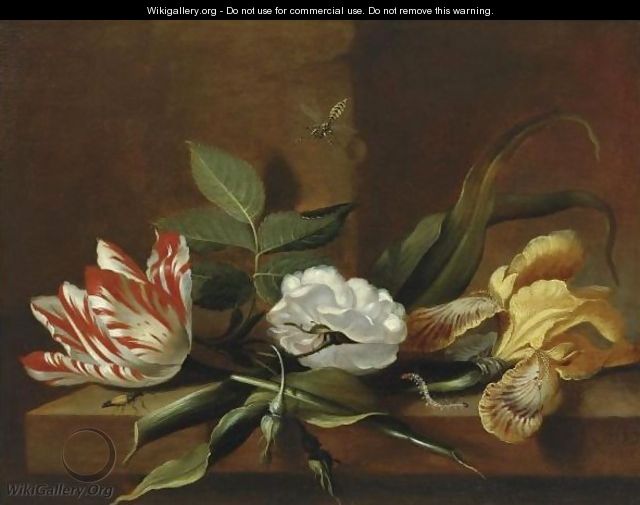For the Month of May, I’ve made a still life painting of birds of the Pacific Northwest. I’m paying tribute to the painter George Flegel. He was born in what is modern day Czech Republic and did his training in Austria and Germany but ended up in Holland in the early 1600’s. His strange compositions, bursting with life are a study of technical perfection. I love how he incorporates birds in his still life’s in such a natural way. Between looking at his paintings, spending more time out in the yard, working on chicken paintings for a show in August, AND having a Stellar’s Jay nest in the eaves right outside my bedroom window, birds have been on my mind lately.
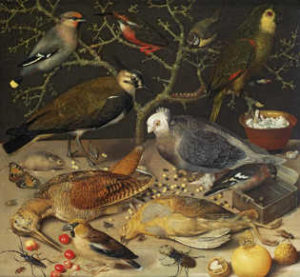
Georg Flegel, Still Life of Birds and Insects 1637
I’ve made a painting that is heavily inspired by one of his most unusual composition filled with birds and insects. I’ve chosen birds and insects that can be found in my backyard in the Seattle area. My dad always knew what birds were in the yard when we lived in the farmhouse in Ohio. I never studied them enough to be encyclopedic about the different species like he was and I had trouble identifying the different little brown ones. My friend, Chris Keenan (who also helped identify the nest in last months painting) helped me figure out more species than could possibly fit into one painting. I did my best, though!
In this Months Painting:
I have 8 birds in the 5″ x 5″ painting; American Crow, American Robin, Anna’s Hummingbird, Dark-Eyed Junko (Oregon), Northern Flicker, Plaited Woodpecker, Red-Breasted Nuthatch and a Stellar’s Jay. Insects are: Darkling Beetle, Painted Lady Cocoon and Butterfly (did you find the Caterpillar in last months painting? They transformed!), Grasshopper, and a Pholcid House Spider (also called a daddy long-legs). Also included: black sunflower seeds and a Blue Flag Iris I plucked the from the garden.
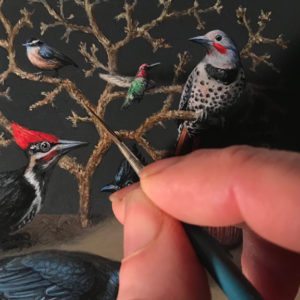
Detail of Miniature oil painting of birds on copper by Rebecca Luncan, 5″ x 5″
It was incredibly challenging to figure out such a complicated composition. Getting that many birds in there, meant I had to paint them at a very small scale. I have some detail images below to help you get a sense of the size of this painting. It took a lot of careful consideration to try to make the painting look right upon careful close inspection, but also from even a short distance away. Some of the details are lost, even from two feet away!
I hope you enjoy this painting as well as your own backyard birds! Go to my Monthly Miniatures page to see all of the paintings in this series. And join my mailing list for a Monthly Miniature Preview, to get a chance to purchase them before before they go for sale on the website, and to see what’s new in the studio.
